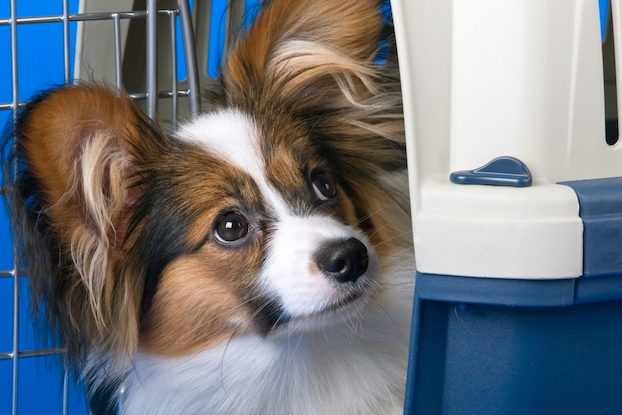How to Care for Your Diabetic Dog
Diabetes isn’t uncommon in canines. In fact, one in 200 dogs is diabetic. Just like in humans, untreated, this disease, which inhibits the body’s ability to produce or respond to insulin, can cause many health complications in dogs. The most common amongst them are low blood sugar, cataracts and ketoacidosis. Some of the more complicated ones can include kidney disease, nerve disease, retina disease, etc.
Is My Dog Diabetic?
If you live with a dog, you know how many things you need to do to keep your companion happy and healthy. Your furry pal depends on you not only for its food and good looks but also for its health. So, if your veterinarian has informed you of this horrifying news, take a deep breath and start making a plan. Just like with healthy dogs, diabetic dogs need to walk a lot and to eat healthily. Furthermore, you’ll have to buy important pet dog products, such as insulin and a monitoring device for measuring your furry pal’s blood glucose levels.

Diabetes in dogs can be discovered by your veterinarian through bloodwork. But, how can you tell if your dog is a diabetic? Though to know for certain you need a veterinarian, there are some symptoms that can indicate that your pet has diabetes, such as weight loss, frequent urination, excessive thrust or greater hunger than normally, cloudy eyes, etc.
If your vet determines that the dog is diabetic, they will run additional tests in order to come up with the appropriate treatment plan. This is a crucial part of the care – the one that will ultimately help your dog survive and stay healthy. The goal of the treatment plan for your dog’s diabetes is to keep their blood glucose levels as close to normal as possible.
What Is Diabetes?
The body brakes down the food we eat to small components, that it later uses so that it can function properly. It’s the same with your dog. When your dog consumes carbohydrates, these become various sugars, including glucose. When glucose is transported into the blood, it provides the cells in your puppy’s body with energy. In order for glucose to enter into the cells, your body needs insulin.

A healthy body produces its own insulin. More precisely, it’s produced by the pancreas and it then helps the body to transport glucose into the cells from the bloodstream. If your doggy is diabetic, their pancreas either doesn’t produce enough insulin to function normally, or the response to the insulin that’s produced in the pancreas is abnormal. As a result, glucose can’t enter the cells of your dog’s body, and it begins to accumulate in the blood, flooding the organs with sugar, that will ultimately damage them, while also not producing enough energy for the cells and the body.
What Do You Need to Care for Your Dog?
Living with a dog is one of the best thing life can offer. However, taking care of them requires some sacrifices and having enough money to get them all they need. When you have a dog, you will buy a lot of pet dog products, such as the right food, a comfy dog bed, a quality collar, the right toys, the most suitable shampoos, supplements, vaccine… – everything they need to stay healthy and happy. And, if your dog is ill, the list of dog supplies will get bigger. For the treatment of a diabetic dog, you’ll need insulin, syringes and a monitoring device for glucose levels.
Of course, the core ingredient of any diabetes treatment is insulin, and it’s very likely that if your dog has diabetes, the vet will prescribe them one of two daily shots of insulin. This is the most important dog supply that you will have to purchase since it will help your dog survive. The veterinarian will determine which insulin your dog needs, as well as how often you’ll have to inject them with it.

The next thing is to come up with a schedule, which will also be done by your veterinarian, and your job will be to learn how to administer the therapy to your dog, how to measure their glucose levels, and most importantly, stick to that schedule. In fact, one of the vital parts of diabetes treatment to inject the dog with insulin at the same time every day. Once you’ve developed this routine, which can take some time, like with any other routines, you’ll realise that it’s fairly simple and quick.
Furthermore, your veterinarian will instruct you about your furry friend’s diet. These instructions may include the type of food they need and how much they should consume, some other healthy dog things, such as healthy nutrient treats or dog dietary supplements, and even the timing of meals. Along with this, your dog has to exercise, and if your doggy is oversized, they’ll also need to lose weight, as this can positively affect the diabetes treatment.



